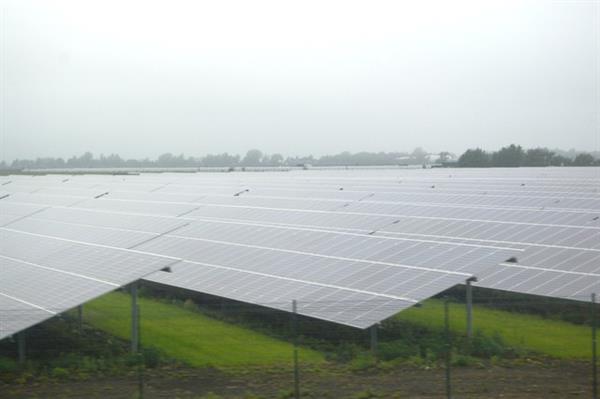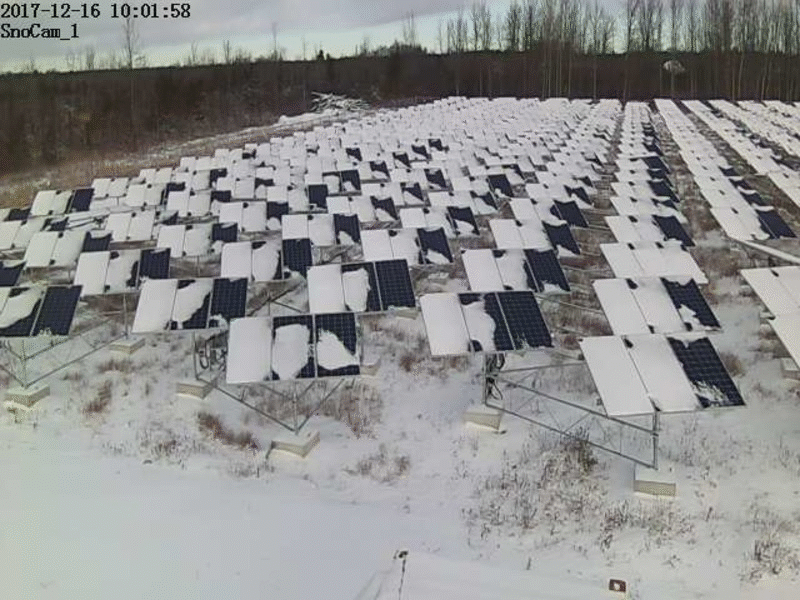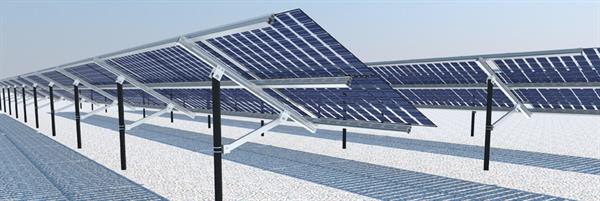Does Solar Make Sense In Wintry Ontario?
Jan 17, 2018

Imagine fields of panels soaking up solar rays in sunny countries like Mexico, India, Costa Rica and you might be left wondering if solar makes sense in Ontario during the cold, dark, snowy months. Of course, solar energy generation is more effective when there is more direct sunlight and more hours of sunlight per day. However, it is still possible to generate electricity throughout the winter months, albeit at only 10%-25% of the capacity of summer months depending on the location, equipment and other factors. Here’s how, despite the snow, despite there being fewer hours of daylight, and especially despite the cold, solar can continue to contribute renewable energy to our province’s electricity supply.
The Cold
While it makes intuitive sense to think that solar panels work by capturing the sun’s heat and turning that into electricity, solar panels actually harvest the sun’s light (electromagnetic radiation). Cold temperatures don’t reduce the energy available in sunlight. This same logic explains why alpine skiers are prone to getting sunburns even in sub-zero temperatures.
In fact, electrical components in a solar panel function more efficiently when they’re cold. So while a solar panel might receive fewer hours of sunlight on a winter day versus a summer day, the winter panel is more efficient at turning that sunlight into electricity than the summer panel.
One mitigating effect of the cold on solar energy production is that the cooler the air is, the less humidity it can hold. Humidity is essentially tiny droplets of water that impede sunlight as it passes through our atmosphere on its way towards panels.

The Snow
Snowfall can be a challenge for solar systems in Ontario. A huge snow dump can cover panels, blocking out sunlight. That’s why after a big snowfall, SolarShare and other solar operators send out a maintenance team to brush off the panels. So while heavy snow isn’t good for producing solar energy, it is excellent for creating jobs in Ontario’s environmental sector.
SolarShare uses Canadian company Morgan Solar’s dual-axis Savanna Trackers, a state-of-the-art technology that allows us to control the orientation of the panels from a smartphone. Whenever snow starts falling on one of our arrays, SolarShare’s Operations and Maintenance Coordinator, Bob Ross, remotely commands the panels to orient vertically. In a vertical orientation, snow can’t pile up on the panels.

Light snow can also reduce a solar system’s performance. But even with inches of snow, sunlight can shine through to the dark-coloured silica, which will heat up (like any dark material exposed to the sun) and begin to melt the snow. The snow will eventually become wet and slide off the panel’s slippery glass surface (sometimes with the help of our maintenance teams). Occasionally at the start of winter, light snow can even be beneficial because as it melts it washes off dust that may have accumulated on the panel over the fall.

As surprising as it may sound, a snowy landscape can actually benefit a solar array so long as the panels themselves are snow-free. Since snow is reflective, it funnels additional light to the panels that would otherwise absorb into the ground. You’ve experienced the reflective power of snow before when you had to squint or put on sunglasses on a bright winter day. Snow reflectance can be so helpful at generating power that some systems employ bifacial panels to harvest solar energy from the sky and from reflecting from the snow below.

The Dark
During Summer in Ontario, there are about five hours of peak sunlight harvesting time: during Winter, there’s just one peak hour. Just because we receive less sunlight, doesn’t mean that it’s impossible to generate electricity, it simply means that we are only able to generate about 10% – 25% of the energy that would be generated in a normal summer month.
With a careful business model that accounts for the low-production winter months, solar systems will still yield healthy financial returns over the course of a year. With battery technology improving by the minute, storing solar energy for those darker days is becoming much easier.
Having the right technology will help a system make the most of short days. A solar array outfitted with Morgan Solar’s dual-axis Savanna Trackers can follow the sun as it moves from east to west across the sky, and it can even account for seasonal changes in the sun’s elevation.
All in all, SolarShare’s and virtually all solar energy systems produce less power in the winter than they do in the summer. Despite that, operating solar projects in Ontario is environmentally and financially sound year-round. Winters are a challenge to overcome, but energy production still occurs throughout the season and with the factors and methods listed above, we are able to make the best of a wintry situation.
We are proud to provide clean, safe power to the province. We meticulously account for darker months in our power-generation models – and have generated $16.2 million in revenue even with six dark, snowy winters behind us.
Does solar make sense in Ontario? Absolutely!
